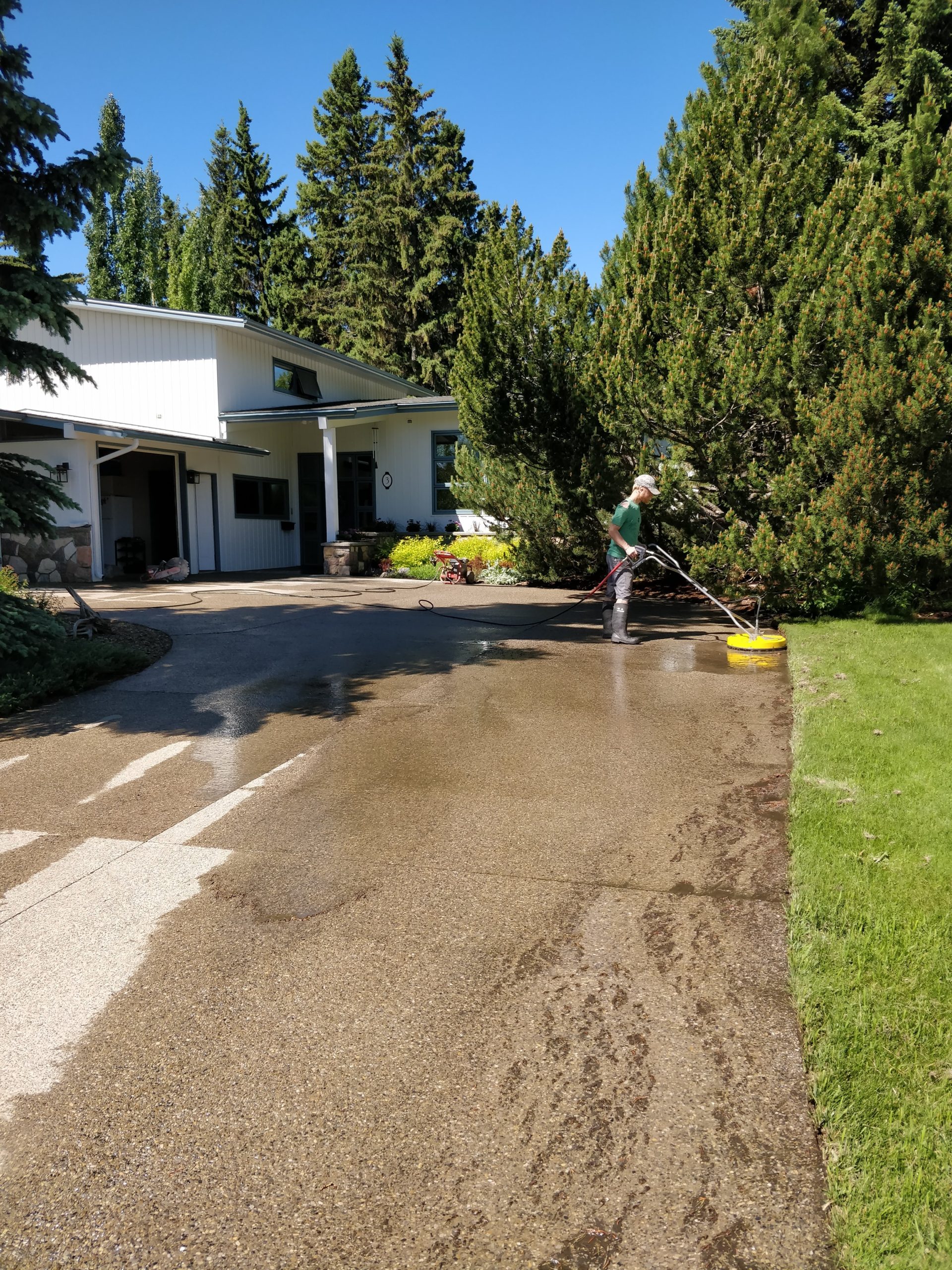Seal Concrete for Longevity
CementWright provides a range of concrete cleaning, sealing, and maintenance services. The best defense against concrete deterioration is a smart design executed well-the correct type of concrete, placed correctly. However, even well-made concrete still requires care to preserve it. Concrete is vulnerable to damage from frost and reactivity from waterborne ions such as sulphates and chlorides. Initial protection comes from the concrete design – air entrainment for frost, and sulphate resistant concrete for sulphate attack, for example. Additional longevity comes from a second layer of protection. Protective treatments include:
- asphaltic or tar coatings on foundations
- high gloss acrylic and dual acting sealers for decorative concrete
- penetrating silane sealers for abrasion resistance
- densification treatments for floors and other surfaces
- specialty concrete coatings
These limit ingress of water, oil, and other contaminants to further extend the life of the concrete. All exterior concrete and much interior concrete should have one of these treatments for optimum longevity.

Visible benefits of Concrete Sealer
All concrete benefits from the additional longevity a good sealer provides, but the effect is immediately obvious on decorative concrete. A high gloss sealer on stamped concrete or exposed aggregate provides depth to the colour. These surfaces visibly degrade swiftly without a sealer. This can be visible within a season or two. Colours fade from stamped concrete, and exposed aggregate seems especially vulnerable to pitting with the salt and frost. CementWright uses a dual acting (both penetrating and topical) high gloss sealer for all our decorative concrete sealing. This should still be renewed regularly to maintain the surface, but the penetrating component provides additional protection from within the concrete.

Acrylic Concrete Sealer
Acrylic sealers are cheap and simple to apply, but require regular reapplication as they are topical and will lost lustre and wear off with time. They can double as a curing agent, so are frequently used on flatwork projects to eliminate the step of water curing the concrete. Resealing concrete involves a thorough clean- usually with a high powered pressure washer and specialized attachments, then reapplication of the appropriate sealer with either a sprayer or roller. Acrylic sealers are used where a topical coating is desired, as with a high gloss stamped concrete. High grade acrylic systems will provide a wet look that can last several years in some cases if chosen and applied correctly. They can be slippery when wet or cold, but traction grit is available to apply with the sealer if this is an issue.
Sealing Concrete with Silane
Silane based systems are absorbed into and bond with the concrete, so require much less frequent renewal and are not vulnerable to abrasion. They cost more up front, but pay back with decreased maintenance costs. However, they do not double as a curing agent, so the concrete must be correctly cured prior to placement for optimum effect. Typically this is done with a water cure or specialized curing agent, as liquid curing membranes can interfere with the proper application of the penetrating sealer. The choice to use a silane-based system should be made when the concrete is first placed. It can be costly to switch from acrylic to silane sealing systems because the acrylic coating must be removed from the concrete surface prior to application of the penetrating silane sealer. A penetrating system would be suitable for:
- concrete that doesn’t require a glossy finish
- abrasion resistant protection of concrete
- high traffic areas requiring abrasion resistance
- broomed driveways, patios, or sidewalks
- structural or architectural concrete such as bridges or parkades
- Exposed aggregate if a matte finish is acceptable
Penetrating systems are durable and require less ongoing maintenance and can be done for similar costs to the less durable acrylic systems. There are options to have the “wet look” with penetrating sealers, as well as sealers that are nearly invisible. Not all penetrating systems offer hydrocarbon resistance. CementWright can help you work through the options to find a decision that suits your situation.
Protection with concrete densification

Densification is a less familiar, though effective, option for protecting concrete. It is similar to silane in it’s penetrating nature and need for prior curing of the concrete, but it is done through chemical reactions and is thus permanent. It has the additional benefit of making the surface much tougher, along with increased moisture and chemical resistance. Concrete densifier is often applied on industrial floors with high wear potential, and is an integral part of a good polished concrete floor system. It can be used successfully on exterior concrete as well, and can be combined with penetrating silane systems for maximum toughness. Food-safe ratings are achievable with these composite systems.
Other concrete coating options
Other options include technical coatings, such as polyurethane based sealers, polyurethane cements, epoxies, and polyaspartic coatings. These are typically only used on interior surfaces, but can have exceptional properties. See our concrete flooring page for more details on these coatings and our related offerings.
CementWright will provide education on the correct treatment for your use, and can provide the required concrete maintenance service required once a decision is made. We also can provide renewal and restoration options if maintenance has been neglected too long. Contact us before your concrete gets that far, though, as not all damaged concrete is salvageable. An ounce of prevention is worth a pound of cure, as they say.


